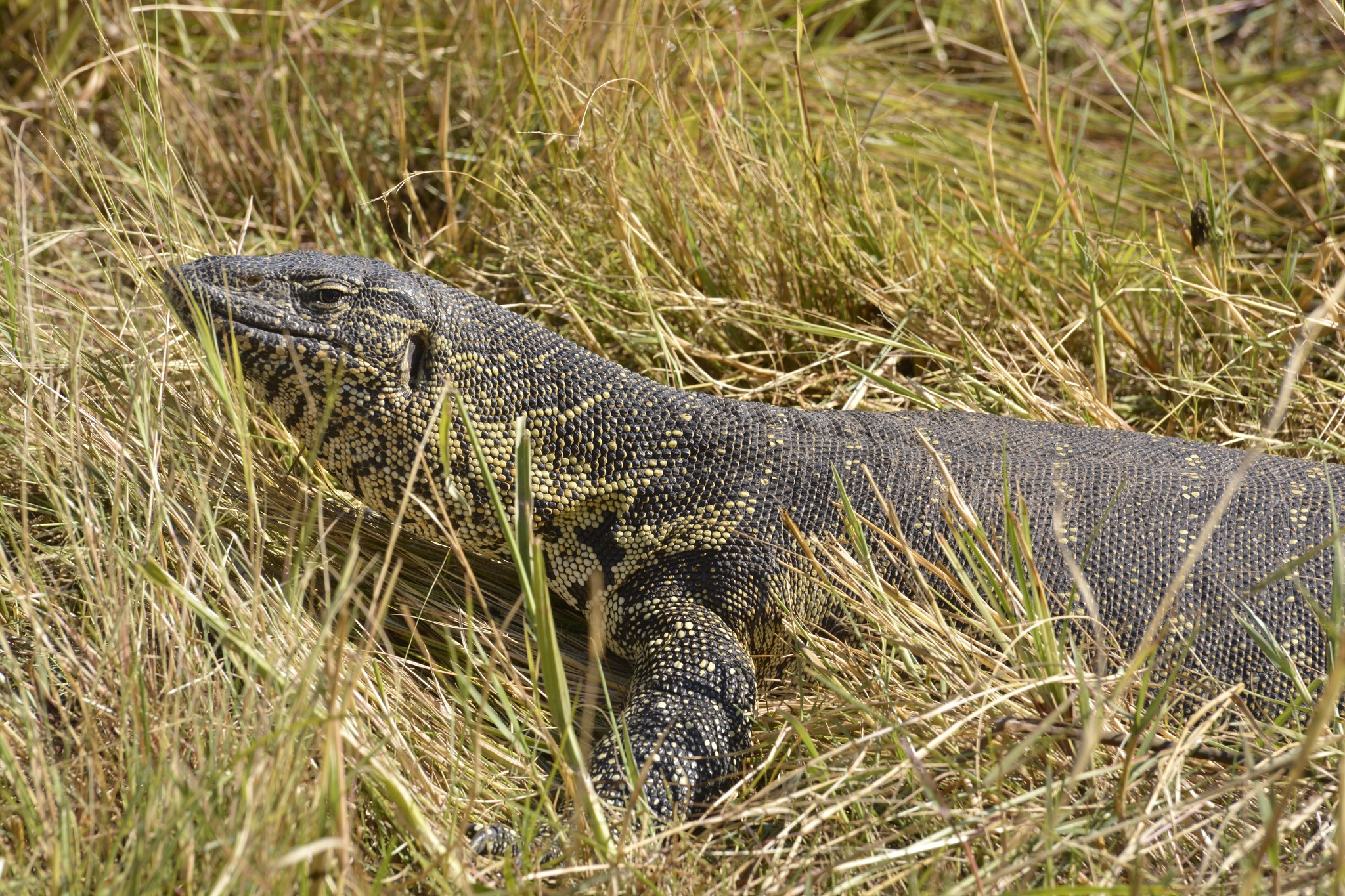- Home
- Conservancy
- Nile Monitor
Description
The Nile monitor (Varanus niloticus) is a large member of the monitor family (Varanidae) found throughout much of Africa, but is absent from the west, where it is replaced by Varanus stellatus.Other common names include the African small-grain lizard,water leguaan or river leguaan (leguan, leguaan, and likkewaan mean monitor lizard in South African English, and can be used interchangeably).
Description
Nile monitors can grow to about 120 to 220 cm (3 ft 11 in to 7 ft 3 in) in length, with the largest specimens attaining 244 cm (8 ft). In an average-sized specimen, the snout-to-vent length will be around 50 cm (1 ft 8 in).[7] In body mass, adults have been reported to vary widely, one study claiming only 0.8 to 1.7 kg (1.8 to 3.7 lb), others state weights ranging from 5.9 to 15 kg (13 to 33 lb) in big monitors. Variations may be due to age or environmental conditions.Exceptionally large specimens may scale as much as 20 kg (44 lb), but this species weighs somewhat less on average than the bulkier rock monitor.They have muscular bodies, strong legs, and powerful jaws. Their teeth are sharp and pointed in juvenile animals and become blunt and peg-like in adults. They also possess sharp claws used for climbing, digging, defense, or tearing at their prey. Like all monitors, they have forked tongues, with highly developed olfactory properties. The Nile monitor has quite striking, but variable, skin patterns, as they are greyish-brown above with greenish-yellow barring on the tail and large, greenish-yellow rosette-like spots on their backs with a blackish tiny spot in the middle. Their throats and undersides are an ochre-yellow to a creamy-yellow, often with faint barring.
Their nostrils are placed high on their snouts, indicating these animals are highly aquatic. They are also excellent climbers and quick runners on land. Nile monitors feed on fish, snails, frogs, crocodile eggs and young, snakes, birds, small mammals, insects, and carrion.They are also the second largest reptile in the Nile river.
Fun Facts
Distribution And Habitat
Nile monitors are native to Africa and the species is d Africa, however, as they thrive around rivers.Nile monitors were reported to live in and around the Jordan River, Dead Sea, and wadis of the Judaean Desert in Israel until the late 19th Century, though they are now extinct in the region.They were also introduced to California, where they don't appear to be invasive and have no known negative impact





